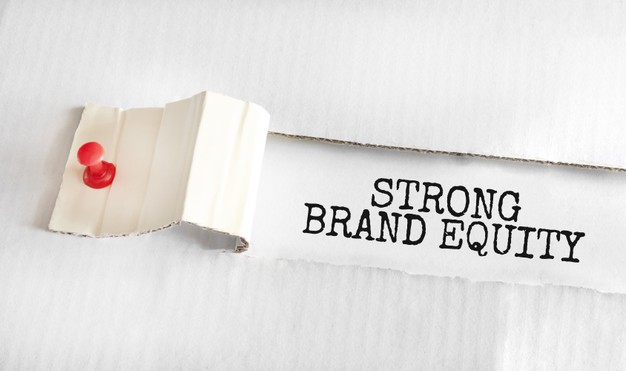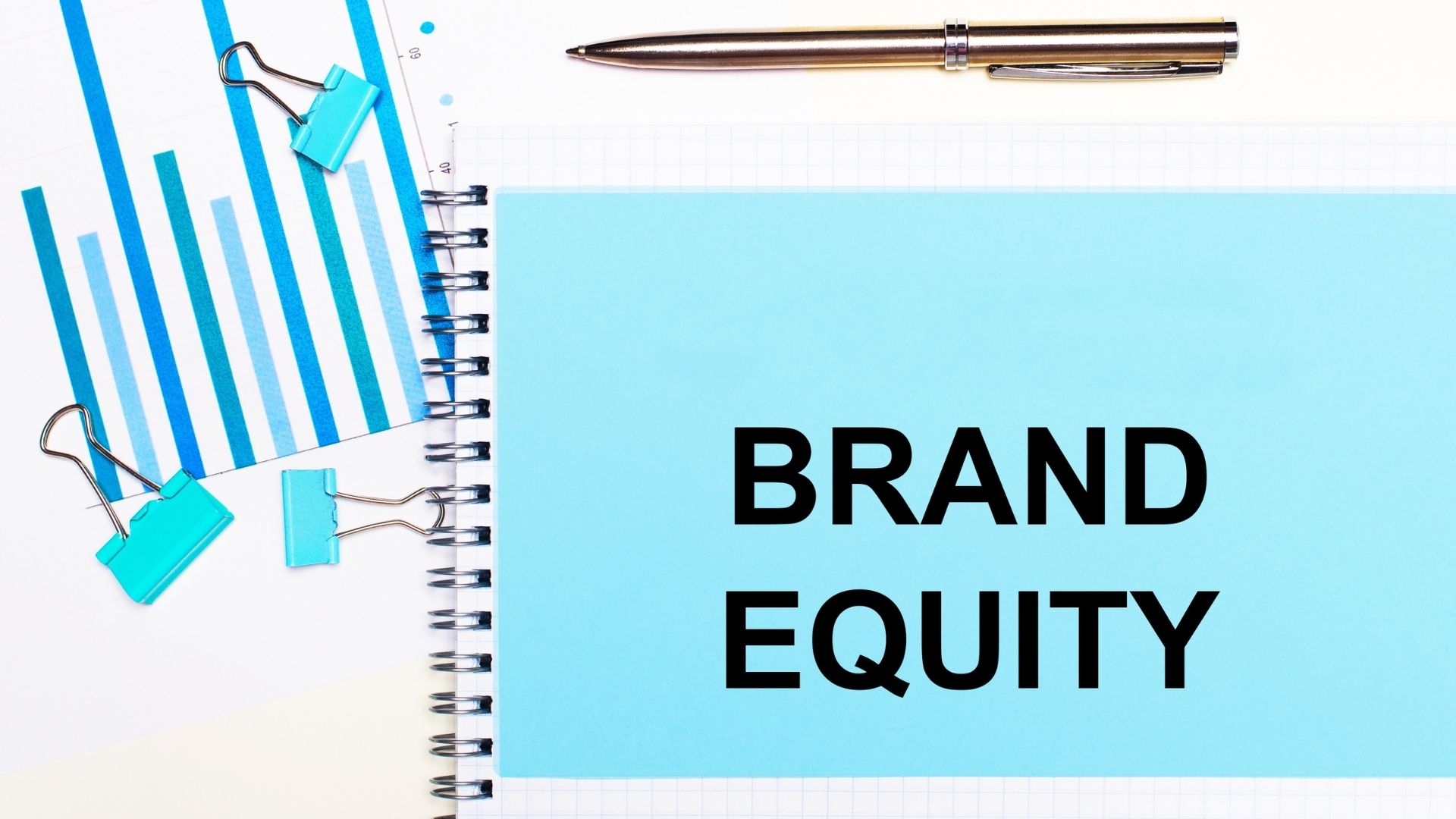Brand equity is a marketing and branding term used to describe the value of a product or service because of the brand name attached to it. Businesses create brand equity by ensuring positive experiences to their users to optimize brand awareness and entice users to continue purchasing from that brand instead of any other competitors.
In simple words, brand equity can be defined as the difference between the value of a branded product or service and the value of an alternate/equivalent product or service which does not have that brand name. Companies that offer their products and services in the same niche or industry generally compete for brand equity.
What is Brand Equity?
Brand Equity is the value that a company’s recognizable brand generates through its products or services. Brand equity has three essential components: consumer perception, negative or positive effects, and resulting value.
A company can develop or grow brand equity by making the product memorable, beneficial, recognizable, and quality product for the customers. Brand equity directly affects the sales volume and profitability of a company, as people like to opt for products and services that have a good brand reputation in the market.
How to Build Brand Equity

Building brand equity starts with conducting research to understand the values and needs of a target audience along with identifying the USP of the brand and fostering loyalty after optimizing brand awareness.
1. Know why your brand does what it does
Successful brands need to have a purpose behind their brand. Instead of thinking about how you can entice your customers, you should find out why your brand does what it does.
2. Test your Messaging
Your brand messaging should be designed after testing your positioning with consumers. You should create a type of message your audiences will stop and like to engage with.
3. Drive Brand Awareness
For optimizing the equity of your brand, you should drive awareness for your brand as well as your company. Your awareness campaigns should emphasize your brand values and develop an emotional connection to boost conversions.
4. Maintain Consistency
For strong brand equity, having a consistent presence and brand personality in the market is inevitable. You should be using consistent typefaces and style guides.
5. Customer Experience
Brands are what consumers say or think about them. By ensuring a good customer experience, you will be able to optimize the customer experience.
Relation between Brand Equities & Brand Awareness
Brand equity has a direct effect on the sales volume and profit of a company. When a company has positive brand equity, then consumers attach a positive quality or prestige to the brand. With positive brand equity, a customer can pay a high price for the same product he can get for a low price. This directly contributes more to the profit. Brand equity directly creates a reputation for a brand. It will be either good or bad.
With high brand equity in the market, a company can also charge a higher price for the product because consumers are willing to pay the same amount. There will be no effect on the sales even if the company charges a high price. Rather sales will get an increase, adding directly to the profits. Brand equity can also provide customer retention benefits which can also provide an increase in profits.
How to Measure Brand Equity
Different ways that can be used to measure the equity of a brand are-
1. Financial value
- Company Value: For measuring brand equity, you need to subtract the tangible assets from the overall value of the firm
- Market Share: Brands that are leaders in the market tend to have higher brand equity.
- Revenue potential: Check the ROI of your brand to gauge its revenue potential
2. Product Value
You may measure the product value by comparing a generic product with a branded product. For instance, Coca-Cola can check its value by comparing it with some other soft drinks in the target market.
3. Brand Audit
With the help of a brand audit, you will be able to have a better understanding of how your brand is performing.
4. Brand Association – Keller’s Brand Equity Model
This equity model is based on a hierarchy of brand equity. It starts with brands establishing their identity and differentiation to make a connection with target consumers. It will let you find where your brand is in the pyramid to give you a better idea of how much brand equity you have. The steps of this equity model are
- Brand Awareness
- Communicating the Idea behind a Brand
- Understanding Customer Response
- Brand Resonance/ Connection
5. Understanding Consumer Perception
You should also try to measure consumer perception for understanding brand equity. You need to gauge your user’s emotions associated with the brand.
You should also measure the recall and recognition of your brand.
Positive and Negative Brand Equity

1. Positive Brand Equity
- Positive Brand equity means that a consumer is willing to pay more for a branded product as compared to a generic product.
- Here, a consumer has more trust in the quality of the branded product rather than being on the generic product.
- It has a positive impact on the volume of sales, profitability, or growth of the business.
- The tangible and intangible assets of the business will see positive results with positive brand equity.
- Customer retention is high in this situation.
Examples of Positive Brand Equity
In 2015, Apple was awarded as “the world’s most popular brand” by one organization. Apple builds its reputation with Mac computers and then, later on, launches iPhones in the market. Apple provides the exact feature that the Mac customers are expecting in its iPhone.
This brand maintains its sleek design and provides innovations to its customers. With this strategy, Apple retains its existing customers and gets new as well. This is why Apple is counted as the classic example of brand equity.
Another example of positive brand equity is Amazon. Amazon is among the top-listed eCommerce website that delivers the best customer experience. Amazon gets successful because of the convenience and industry-leading shipping options provided by this eCommerce brand. This eCommerce brand continuously maintains a positive customer experience which directly leads to positive brand equity for Amazon.
2. Negative Brand Equity
- Negative Brand Equity means that a consumer is willing to pay more for a generic product as compared to the branded ones.
- The trust in the quality of the branded product is less than the generic product.
- It harms the volume of sales, profitability, or growth of the business. Here, a competitor can get easily benefitted from this situation.
- The tangible and intangible assets of the business will see a negative result in this situation.
- Customer retention is low in this case.
Examples of Negative Brand Equity
In 2015, Volkswagen received a notice from EPA for falsifying the emission numbers. This notice decreases the brand equity of Volkswagen instantly. It happens because the customers of this brand lost their trust in the brand, and they felt that Volkswagen was not adhering to its promise of being environment friendly. This is how Volkswagen gets negative brand equity with a single-issued notice.
The other examples in this category can be Toyota, Goldman Sachs, and BP oil companies. In 2009, Toyota had to recall its 8 million vehicles due to unintended acceleration. This incident decreases the trust of its consumers and leads to negative brand equity.
The Financial brand Goldman Sachs also suffers from negative brand equity because people got to know about its role in the financial crisis of 2008. On the other side, the oil and gas company BP lost its equity in 2010. It happens because after the U.S. Gulf of Mexico oil spill.
Wrap Up!
Now it is clear that brand equity helps a brand to have optimized market presence, awareness, and ROI. Brands that have better equity earn more money than competitors while spending less, as such brands can charge price premiums.
When users trust the brand values, quality, and promises of a brand, they do not hesitate in paying higher prices to purchase from that brand.
What are your thoughts about the importance of brand equity for contemporary businesses?
Pinky is an MBA in Marketing from the University of Mumbai. She loves helping people out in learning Marketing and sharing latest ideas and tactics for growing businesses.
